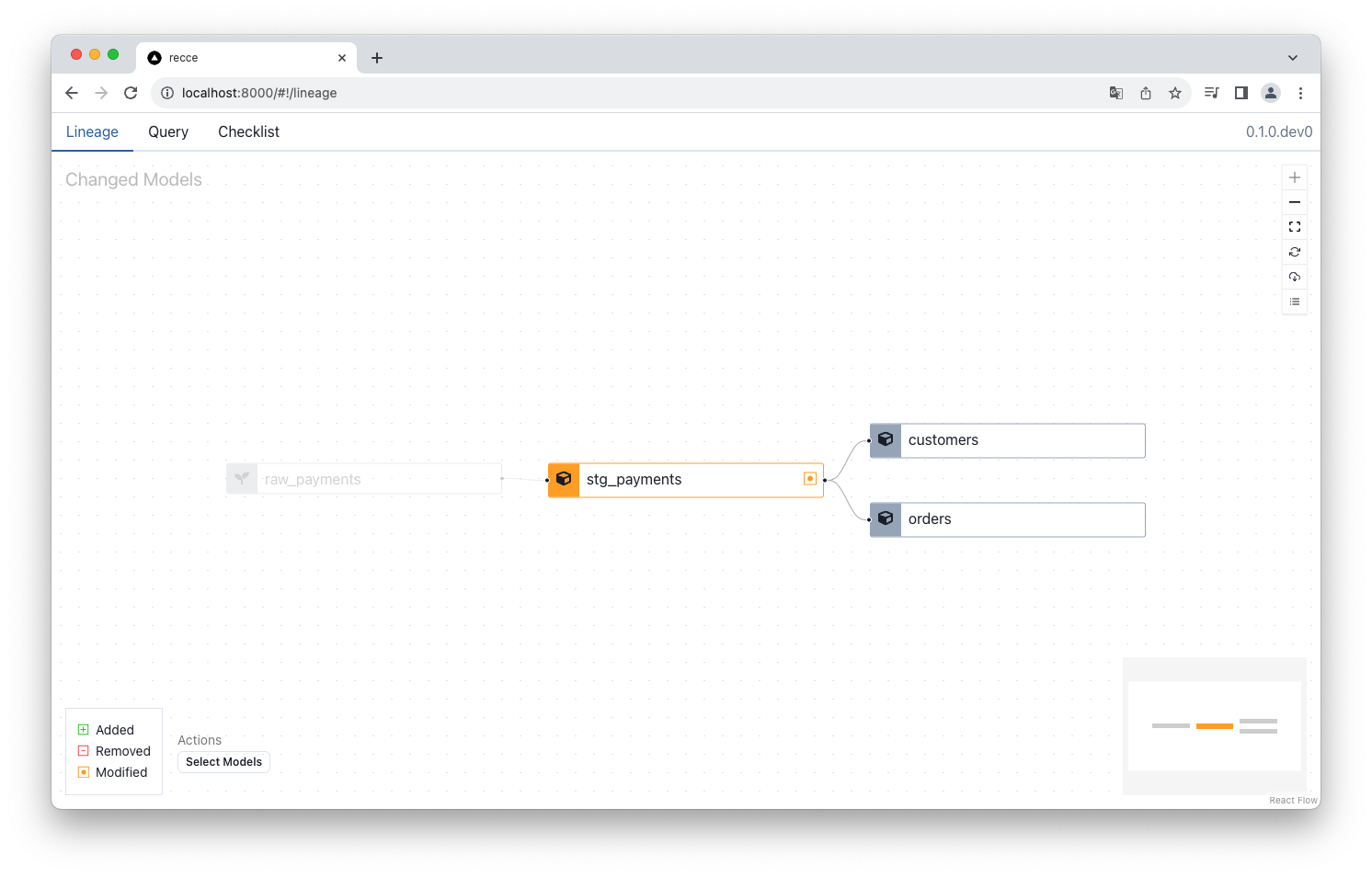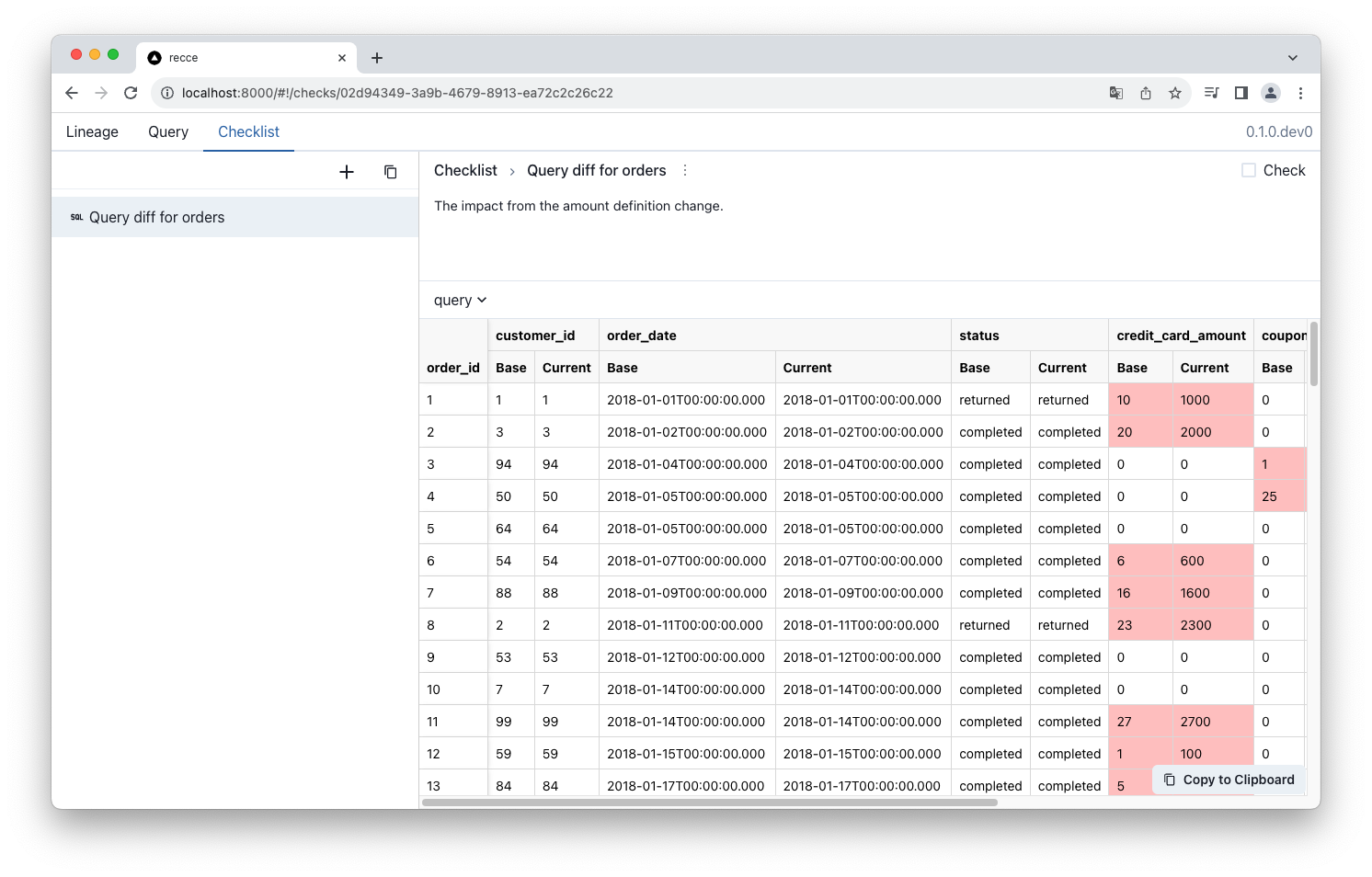5 Minute Tutorial
Jaffle Shop is an example project officially provided by dbt Labs. This document uses jaffle_shop_duckdb to enable you to start using Recce locally from scratch within five minutes.
Tip
DuckDB projects like jaffle_shop_duckdb don’t use a server-based connection or cloud warehouse credentials. Be aware that a few setup steps differ from those for cloud-based warehouses.
Step by Step
- Clone the “Jaffle Shop” dbt data project
- Prepare virtual env
- Installation
- Provide additional environment to compare
Edit./profiles.ymlto add one more target to serve as the base environment for comparison.
Note: This step is only necessary for file-based engines like DuckDB. For cloud warehouses (e.g., Snowflake, BigQuery), Recce auto-detects your active dbt profile and schema, so no changes required. - Prepare production environment
Using DuckDB, you need to generate the artifacts for the base environment. Checkout themainbranch of your project and generate the required artifacts intotarget-base. You can skipdbt buildif this environment already exists.
Note: This step is only necessary for file-based engines like DuckDB. For most data warehouses, you don’t need to re-run production locally. You can download the dbt artifacts generated from the main branch, and save them to atarget-base/folder. - Prepare development environment. First, edit an existing model
./models/staging/stg_payments.sql. run on development environment. - Run the recce server
Open the link http://0.0.0.0:8000, you can see the lineage diff

- Switch to the Query tab, run this query
Click the
Run Diffor pressCmd + Shift + EnterClick on the 🔑 icon next to theorder_idcolumn to compare records that are uniquely identified by theirorder_id.
- Click the
+to add the query result to checklist
What’s Next
By following this DuckDB tutorial, you’ve seen how Recce works locally. You can now return to the Getting Started guide) to set up Recce with your cloud data warehouse.
Got questions? Let us know. We’re happy to help!